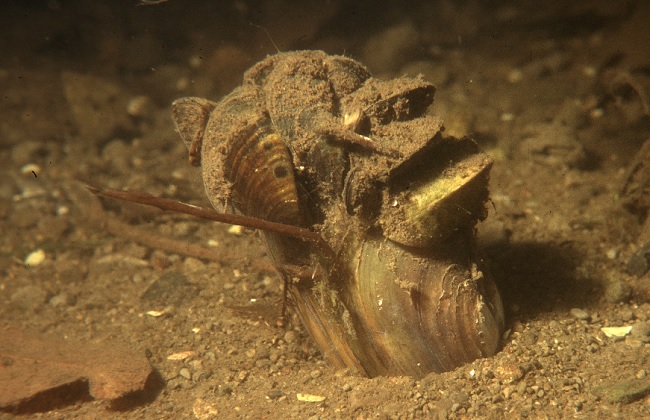Invasive zebra mussels have rapidly colonized the Rideau River including the Rideau Canal, a UNESCO World Heritage Site located in the nation’s capital, Ottawa. A study published in the Canadian Journal of Zoology is said to be the longest-know monitoring study of this invasive species in a small river system.
Zebra mussels were first found in the Rideau River in 1990. After monitoring them over two decades there are areas where there are hundreds of thousands of mussels in a square metre.

Zebra mussels attached to the shell of a native mussel prevent it from opening. (André Martel/Canadian Museum of Nature)
‘Increase…was just stunning’
“The increase in their numbers in the early years was just stunning,” said the study’s lead author, Dr. Andre Martel of the Canadian Museum of Nature in a news release. “This long-term study shows that the species was quick to establish itself and is here to stay.”
Zebra mussels first arrived in Lake Erie at the heart of North America in 1986. They originated in the Caspian Sea region of Europe. Females can produce up to one million eggs per year. The mussels often spread by attaching themselves to boats.
Zebra mussels out compete natives
They outcompete native mussels for food and attach themselves to hard surfaces including boulders, rock and filtration pipes.
The Rideau River is a popular waterway for boating, fishing and other recreational uses.







For reasons beyond our control, and for an undetermined period of time, our comment section is now closed. However, our social networks remain open to your contributions.